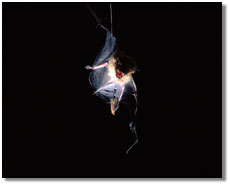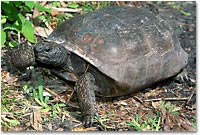 |

|
 |
Now
Available: Guide to Programs FY 2003
The new edition of the Guide to Programs (NSF 03-009) is
available on the NSF website. Published each fiscal year, the Guide
is a compilation of funding opportunities offered by NSF for research
and education in science, mathematics, engineering, and technology.
The Guide includes broad, general descriptions of programs
and activities for each NSF Directorate, as well as sources for
more information. NSF funds research and education in most fields
of science and engineering and accounts for about one-fourth of
all Federal support to academic institutions for basic research.
See the Guide
to Programs FY 2003.
(posted November 14, 2002)
|
 |
 |
| Hydrogen's electron and proton have oppositely
charged antimatter counterparts in the antihydrogen: the positron
and antiproton. |
Researchers
Get First Look into Antimatter Atoms
It seems like the stuff of science fiction, but NSF-sponsored researchers
working at CERN, the European Organization for Nuclear Research,
have probed the properties of whole atoms of antimatter, the "mirror
image" of matter, for the first time. Because of its instability,
antimatter is notoriously hard to handle. Fast-moving or "hot" antimatter
has been created for years, but previous hot anti-atoms were annihilated
by collisions with matter before they could be studied. Last year
the ATRAP (for Antihydrogen Trap) team led by Gerald Gabrielse of
Harvard University announced they'd pioneered methods of slowing
down negatively charged antiprotons and combining them with slow
positrons, the positively charged antimatter equivalent of electrons,
to yield the simplest possible anti-atom: antihydrogen. Now the
team has made the first measurements of a complete antihydrogen
atom.
More... (posted
November 6, 2002)
|
 |
|
 |
| A big brown bat (Eptesicus fuscus) approaches
a wax moth (Galleria mellonella ), which serves as the control
species for the studies of the tiger moths. The moth is only
"semi-tethered," allowing it the mobility to fly evasively.
Image Courtesy: William Conner and Nickolay Hristov, Wake Forest
University. |
Tiger
Moths Use Sonic Defense to Trick Bats
As a bat zips through the night sky, it sends out high-pitched squeaks,
bouncing sound waves off of objects and unsuspecting prey. While
most insect victims would have trouble fighting back, many dive
and loop to avoid enemies, and some have the added advantage of
being poisonous. Yet, in the dark, the bright warning colors of
most toxic insects are lost on predators. Now, some researchers
suspect one type of moth may have a way of effectively broadcasting
its toxicity -- the insect produces high-pitched sounds of its own.
Tiger moths have a special clicker called a tymbal built into their
thorax. When they fly, the moths click their tymbal to produce a
distinct sound that seems to keep bats at bay.
More... (posted
November 6, 2002)
|
 |
 |
|
|
NSF Establishes
Five New Centers to Develop Teaching Leadership in Science and Mathematics
The National Science Foundation (NSF) is announcing its investment
in five new Centers for Learning and Teaching to answer the need
for a new generation of professionals who can inspire and challenge
students while engaging in research on how students learn. The new
centers -- established at the American Association for the Advancement
of Science (AAAS) in Washington, D.C., Washington University in
St. Louis and at the universities of Wisconsin, Washington and Georgia
-- will receive an estimated $10 million each over the next five
years. "The Centers for Learning and Teaching are our test sites
for innovative approaches to preparing a new generation of science,
engineering and mathematics faculty who can work well together,
who can introduce a strong research component into their educational
approaches, and who can create the capacity for challenging, engaging
learning opportunities for students in formal and informal settings,"
said Judith Ramaley, NSF's assistant director for education and
human resources.
More... (posted
November 6, 2002)
|
 |
 |
|
Photo credit: Peter
May
|
Study
of Endangered Tortoises May Reveal Impact of Diseases on Ecosystems
Building on 10 years of research into an upper respiratory tract
disease that has devastated endangered gopher tortoises across the
United States, scientists are trying to grasp how chronic diseases
spread. The researchers are using wild animal disease as a model
for understanding not just the impact of chronic disease on animals,
but also on entire ecosystems. The researchers are interested in
learning how natural factors combine with human-induced ones, such
as relocation and fire exclusion, and how those relationships interact
with biological and microbial factors to determine the incidence
of disease.
More... (posted
November 6, 2002)
|


|

